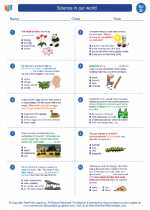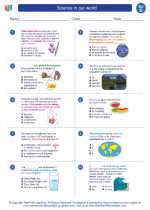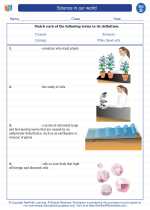Connective Tissue
Connective tissue is one of the four basic types of animal tissue. It provides support and structure to the body and also serves to bind and connect other tissues and organs. Connective tissue is made up of cells, fibers, and a gel-like substance called the matrix.
Types of Connective Tissue
There are several types of connective tissue, each with its own unique characteristics and functions:
- Loose Connective Tissue: This type of connective tissue is found in areas such as beneath the skin and between organs. It provides support and elasticity.
- Dense Connective Tissue: Found in tendons and ligaments, this type of connective tissue is strong and provides support to the structures it connects.
- Cartilage: Cartilage is a firm, flexible type of connective tissue found in areas such as the joints and the ears. It provides cushioning and support.
- Bone Tissue: Bone tissue is hard and rigid, providing support, protection, and serving as a storage site for minerals.
- Blood: Blood is a type of connective tissue that transports oxygen, nutrients, and waste products throughout the body.
- Adipose Tissue: This is a specialized type of connective tissue that stores fat and provides insulation and cushioning.
- Fluid Connective Tissue: This includes lymph and other fluids that transport immune cells and other substances throughout the body.
Functions of Connective Tissue
Connective tissue performs several important functions in the body:
- Support: Connective tissue provides structural support for the organs and tissues of the body.
- Protection: It protects delicate organs and structures from mechanical injury.
- Connection: Connective tissue connects different tissues and organs, forming a cohesive framework for the body.
- Transport: Some types of connective tissue, such as blood, transport nutrients, gases, and waste products throughout the body.
- Storage: Connective tissue can store energy in the form of fat and also serve as a reservoir for minerals in the case of bone tissue.
Study Guide for Connective Tissue
To study connective tissue effectively, consider the following key points:
- Learn the different types of connective tissue and their unique characteristics and locations in the body.
- Understand the functions of connective tissue, and be able to provide examples of how each type of connective tissue contributes to these functions.
- Study the structure of connective tissue, including the components of cells, fibers, and the matrix.
- Explore the role of connective tissue in maintaining the overall structure and function of the body.
- Consider the connections between connective tissue and other body systems, such as the skeletal system and the circulatory system.
By mastering these key points, you will develop a solid understanding of connective tissue and its importance in the human body.
.◂Science Worksheets and Study Guides Fourth Grade. Science in our world
Study Guide Science in our world - 4th gr.
Science in our world - 4th gr.  Worksheet/Answer key
Worksheet/Answer key Science in our world - 4th gr.
Science in our world - 4th gr.  Worksheet/Answer key
Worksheet/Answer key Science in our world - 4th gr.
Science in our world - 4th gr.  Worksheet/Answer key
Worksheet/Answer key Science in our world - 4th gr.
Science in our world - 4th gr.  Vocabulary/Answer key
Vocabulary/Answer key Science in our world - 4th gr.
Science in our world - 4th gr. 

 Worksheet/Answer key
Worksheet/Answer key
 Worksheet/Answer key
Worksheet/Answer key
 Worksheet/Answer key
Worksheet/Answer key
 Vocabulary/Answer key
Vocabulary/Answer key

The resources above cover the following skills:
History and Nature of Science: A student should understand the history and nature of science. A student who meets the content standard should:
Develop an understanding that historical perspectives of scientific explanations demonstrate that scientific knowledge changes over time, building on prior knowledge.
Develop an understanding that scientific knowledge is ongoing and subject to change as new evidence becomes available through experimental and/or observational confirmation(s).